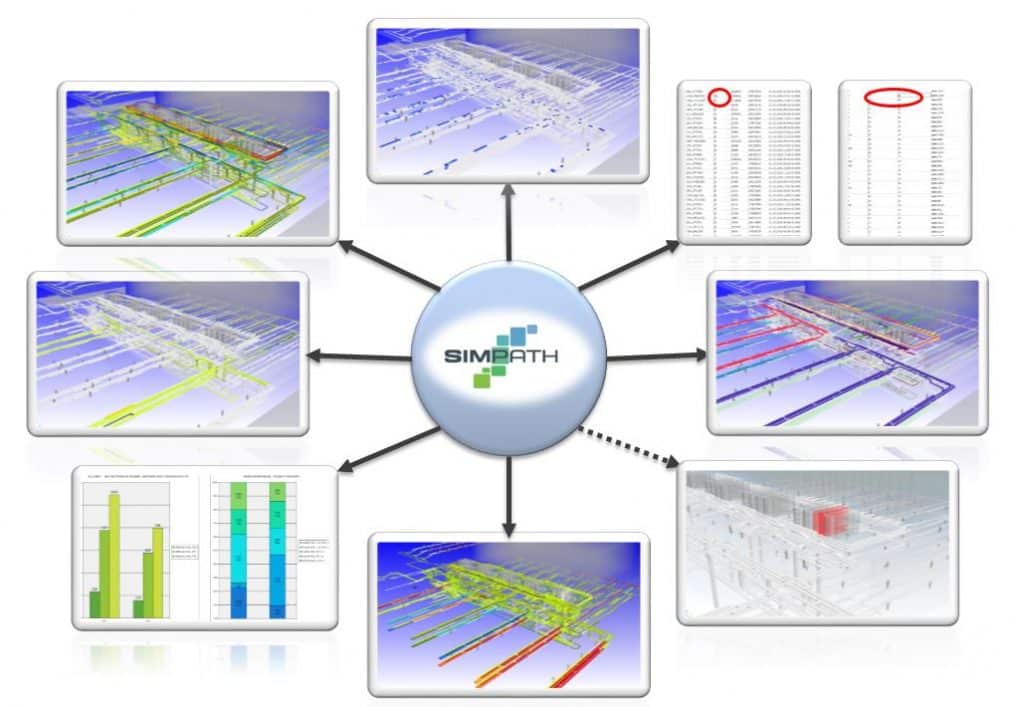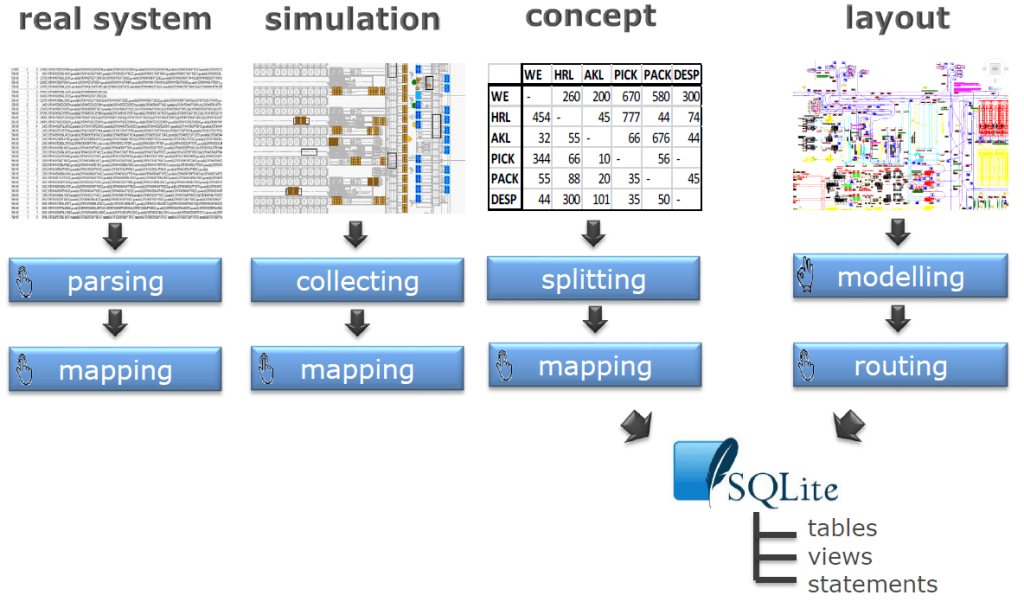SimPath – Visualization and analysis of material flows

Application and benefits
In addition to the classical simulation and emulation of logistics systems, the continuous monitoring and optimization of the real systems is becoming increasingly important.
It is especially important in complex systems to analyze the material flow in detail to visualize it and to provide a corresponding dynamic code system which can be used both for the real and simulation data as well as for planning data.
The SimPath Library makes it easy to set up a conveyor system in 3D and quickly transfer the data. Complementing the data storage in an SQLite inMemory database and a variety of support functions, complex systems with very high data volumes can be handled with the SimPath Library.
With SimPath, material flows can be analyzed to a very high degree of detail, material flows can be visualized and material flow information can be displayed. Clearly structured interface functions can also be used to easily integrate project-specific requirements.
The following functionalities are available:
- Sankey: visualization of the absolute quantity flows on an hourly basis
- Routing: visualization of the routing and presentation of the time consumption between two reporting points
- Cycles: visualization of the looper factor on an hourly basis
- Replay: visualization of deviant execution and selection / selection of certain group controls
- Statistics: visualization of material flows towards and away from reporting points, separated by source and target
- Exceptions: analysis of areas and transport units with segment jumps
Other possible applications
However, the SimPath concept not only focuses on the analysis of real systems, but also offers the possibility:
- to be analyzed and visualized from a simulation model. For this purpose, there are already data collection objects that can be easily integrated into the simulation model.
- to map from the abstract material flow diagram of a planning concept to the plant.

